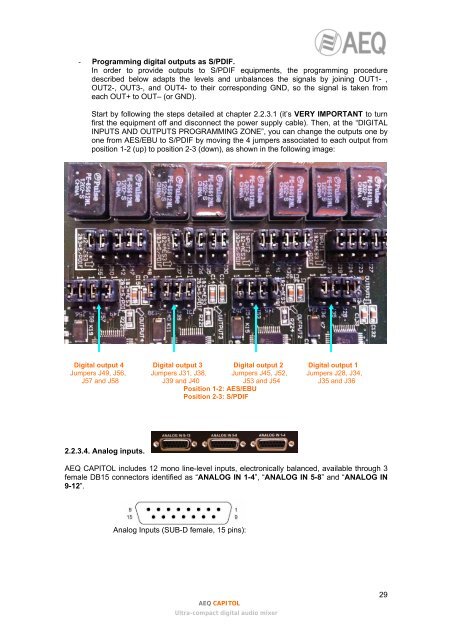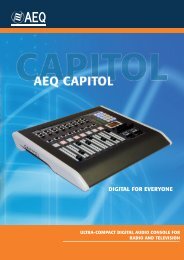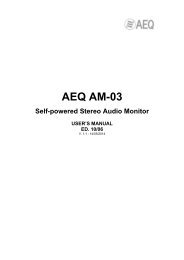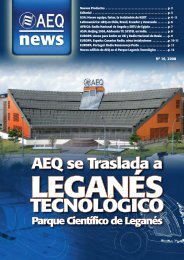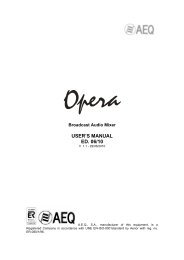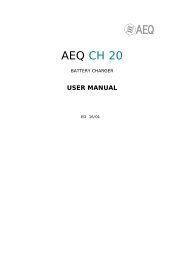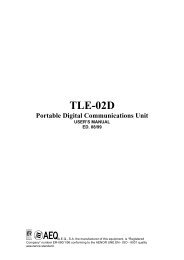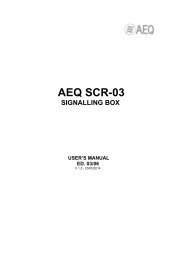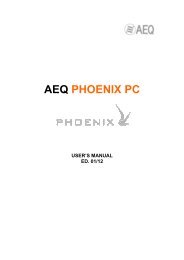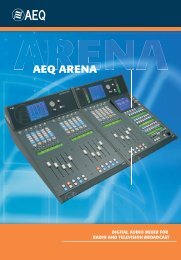Manual - AEQ International
Manual - AEQ International
Manual - AEQ International
You also want an ePaper? Increase the reach of your titles
YUMPU automatically turns print PDFs into web optimized ePapers that Google loves.
- Programming digital outputs as S/PDIF.In order to provide outputs to S/PDIF equipments, the programming proceduredescribed below adapts the levels and unbalances the signals by joining OUT1- ,OUT2-, OUT3-, and OUT4- to their corresponding GND, so the signal is taken fromeach OUT+ to OUT– (or GND).Start by following the steps detailed at chapter 2.2.3.1 (it’s VERY IMPORTANT to turnfirst the equipment off and disconnect the power supply cable). Then, at the “DIGITALINPUTS AND OUTPUTS PROGRAMMING ZONE”, you can change the outputs one byone from AES/EBU to S/PDIF by moving the 4 jumpers associated to each output fromposition 1-2 (up) to position 2-3 (down), as shown in the following image:Digital output 4 Digital output 3 Digital output 2 Digital output 1Jumpers J49, J56, Jumpers J31, J38, Jumpers J45, J52, Jumpers J28, J34,J57 and J58 J39 and J40 J53 and J54 J35 and J36Position 1-2: AES/EBUPosition 2-3: S/PDIF2.2.3.4. Analog inputs.<strong>AEQ</strong> CAPITOL includes 12 mono line-level inputs, electronically balanced, available through 3female DB15 connectors identified as “ANALOG IN 1-4”, “ANALOG IN 5-8” and “ANALOG IN9-12”.Analog Inputs (SUB-D female, 15 pins):<strong>AEQ</strong> CAPITOLUltra-compact digital audio mixer29


